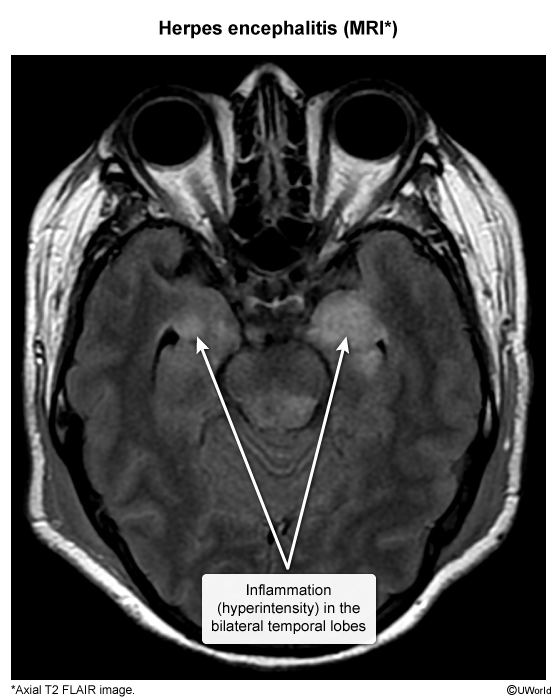Encephalitis
Article Sections
Introduction
Encephalitis is an inflammatory condition of the brain parenchyma characterized by acute or subacute onset of neurological symptoms due to infection or immune-mediated processes (eg, autoimmune encephalitis).
Pathophysiology
Encephalitis can result from direct viral invasion of the brain parenchyma or from an autoimmune response triggered by viral infection (eg, post-infectious) or underlying cancer (eg, paraneoplastic).
Viruses commonly associated with encephalitis include herpes simplex virus (HSV), enteroviruses (eg, coxsackievirus), West Nile virus (WNV), and other arboviruses (eg, St. Louis virus, Dengue viruses). Most viruses infect the brain parenchyma via transmission from blood. A select few, including HSV and rabies, cause infection via retrograde transport in neurons. With HSV-1 infection, transmission to brain parenchyma can happen via primary oropharyngeal infection that travels via the olfactory tract to the olfactory cortex (in the temporal lobe) or from the reactivation of latent virus in the trigeminal ganglion with subsequent spread into the adjacent temporal lobe.
Continue Learning with UWorld
Get the full Encephalitis article plus rich visuals, real-world cases, and in-depth insights from medical experts, all available through the UWorld Medical Library.
Images
